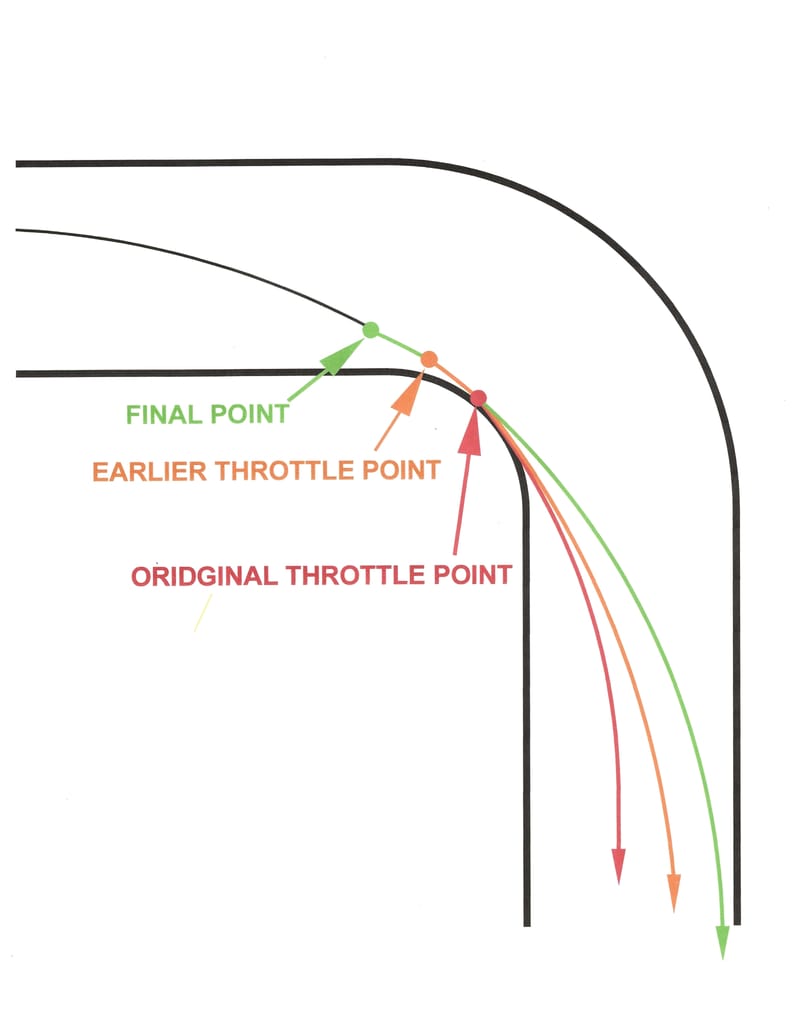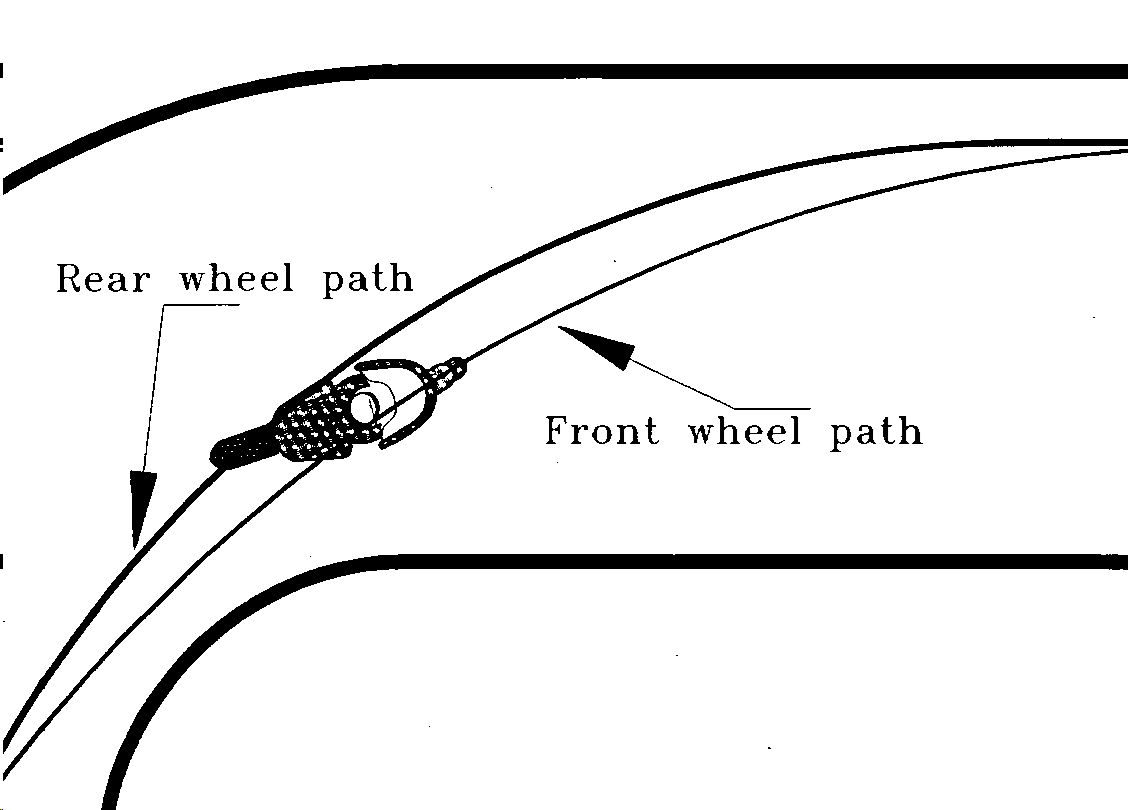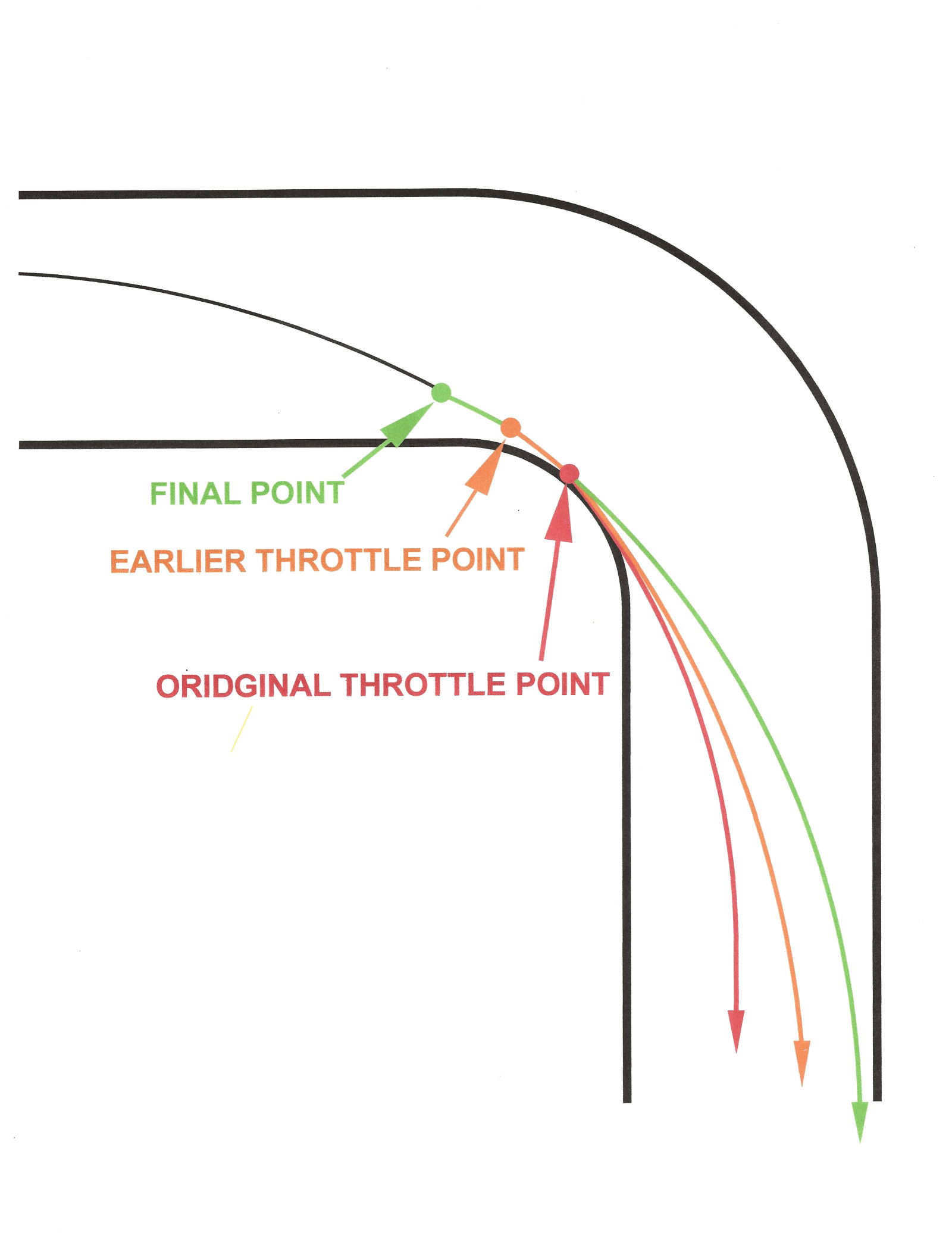Throttle control in the exit

THROTTLE CONTROL
Throttle control is important. Riders must develop a technique that will allow as much throttle as soon as possible.
Too much throttle and the rear wheel will spin excessively. This in turn will lead to the rear wheel stepping out too much and result in a possible crash. Too little throttle and the drive onto the straight is weak.
Too soon on the gas and you will run off the track at the exit. Too late and the results are obvious. You must find the optimum balance.
There is one concept you need to remember in throttle control, which is "cause and effect." The cause is the opening of the throttle and the effect is your drive onto the straight.
There are two main aspects of good throttle control.
1. HOW MUCH
2. WHEN
Even though the results of the two are closely related, you must mentally separate the two when trying to make improvements in your lap times. The following are two mental tools you can use.
1. HOW MUCH
The main object is to apply as much power as possible. The amount of power to apply is limited by the available traction. To be sure you are using all of the traction you will need to spin the rear wheel SLIGHTLY as you exit the turn. Seldom is the throttle abruptly fully opened. As in every other aspect of racing smoothness is the key. The gas is always rolled on smoothly. This will allow you time to feel the rear wheel's response to the power.
The traction available will vary from turn to turn and from lap to lap. As your speed through the turn picks up you will be leaning over more. This extra lean angle will leave less traction for acceleration. As the tire gets warmer each lap, you will have more traction available. In a slower turn you may be leaned over to the same angle but you will be in a lower gear. The lower the gear the easier the rear wheel will spin.
Figure # 1
There are too many variables, to try to calculate your traction on the spot. This is why you apply the throttle in a smooth and progressive manner. You will approach the unknown traction limit in a controlled manner. As the traction is consumed, you will feel some movement of the rear tire. and eventually, the rear wheel will begin to step out. This is the reaction you will strive for, as you drive out of the turn. Once the tire steps out you know you have used all of the traction. Be careful at this point, too much throttle and you will lose control of the rear tire.
To site some examples; If you are familiar with drag racing, you know they leave the line with the rear wheels barely spinning. If the spin too much they "go up in smoke" and lose the match. If they don't spin at all, they will get beat again.
The same holds true for road racing. You must have the tire just at the point of spinning to know you have as much power applied as possible.
It is certain the rider next to you on the track will be applying as much power as he can to beat you.
Another example of bikes using all of the traction is dirt racers; short track or mile. Both of these types of racers come out of the corner with the rear wheel hanging out. This allows a good drive onto the straight.
To a small degree this is what a road racer is trying to do on pavement.
OBSERVE WHAT YOUR REAR WHEEL IS DOING
TO DETERMINE "HOW MUCH"
2. WHEN
The object is to achieve is "Maximum Throttle Time.” WHEN is very important because a split second delay will cost you acceleration off the turn and for the entire length of the straight.
To determine When, you must observe where your motorcycle is, as you enter the straight. Cause and effect come into play here. The sooner you apply the gas (cause), the wider your exit line will be (effect). If your exit line is mid track or tighter, as shown with the red line, you need roll the throttle on sooner.
Figure # 2
Figure 2 shows a basic concept of improving your drive off the corner. This drawing shows the technique using three step to go from original throttle point to the final, to show concept. The actual technique should take several small changes of the throttle point..
As you can see from the original throttle point the exit line stays tight to the right and is not getting the best drive off. Notice as the rider turns the throttle on earlier but at the same amount the bike is pushed further toward the outside edge.
The goal is to have the acceleration carry you out to the edge of the pavement. For example, as you accelerate out of a right hand turn, the acceleration will force you to the extreme left edge of the track. If you find your self rolling out of the throttle to keep from running off the track, then you have throttled too soon.
The tool you need is a visual marker or reference point. I like to call it the "throttle point.” You must take notice of where you are turning the throttle on. Only when you know where you are doing something can your make an accurate change. If you are riding by the seat of your pants you can not make accurate changes in your riding techniques.
OBSERVE YOUR EXIT LINE TO DETERMINE "WHEN"
Extra benefit of this technique. When learning a new track, it is a good idea to figure out the throttle control, to get a good exit before trying to be too aggressive on entry speed. If you know you have an exit plan for the turn it will be easier to work on higher entry speed with more confidence.